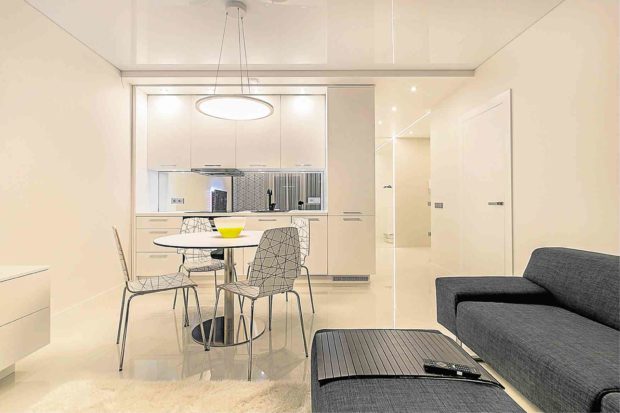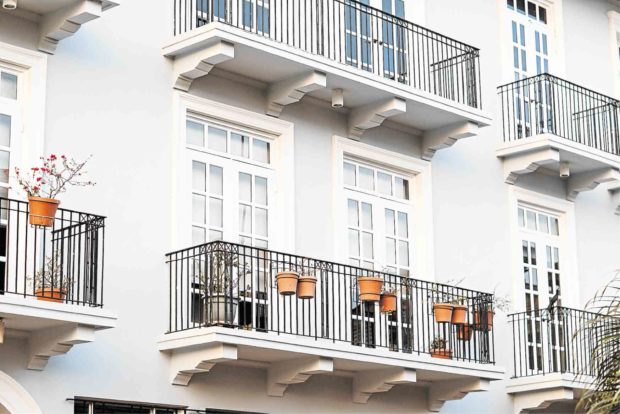Rising prominence of vertical communities
In the past, the typical home often consisted of a white picket fence, a small patch of green and a split-level house.
However, the rapid rise in real estate prices, the increasing scarcity of land in urban centers and the changing demands of a modern, fast-paced lifestyle had many dreaming of living in their own penthouse, or luxurious apartments, instead.
Nowadays, vertical communities are becoming the norm. Especially for those who wish to live near their workplaces, apartments and condominiums seem to be the more practical and convenient option. Yet are these kind of homes for everyone? Is a vertical community really the ultimate dream or is it just a glorified shanty?
In the past, the typical home often consisted of a white picket fence, a small patch of green and a split-level house.
While they seem to signify a modern lifestyle, multi-storey buildings have been around since the 1800s. Back then, “high-rise” structures would refer to dwellings featuring 10 to 20 floors. With the invention of the elevator and the steel frame, architects were able to dream bigger and create taller buildings. While they were primarily invented to accommodate offices, eventually they were adapted to suit residences.
Article continues after this advertisementToday, it is perfectly acceptable, even preferable, to live in vertical communities.
Article continues after this advertisementAs reported by Colliers International in late 2018, the demand for primary and pre-selling segments of residential units remains stable in Metro Manila. Despite the fear of condominium glut, the demand for residential condominiums and apartments remain as strong as ever.
With its flexibility of payment terms and proximity to business districts, high-rise residential buildings appeal to the masses. From young families to practical singles, vertical communities now accommodate a variety of residents.
Space redefined
Detractors of vertical communities call out the restricted space of such residences. Especially for those who grew up in a house within an exclusive lot, the idea of a compact home and shared amenities seem absurd.
Yet for those wishing to maintain a minimal lifestyle and a healthy social life, vertical communities are the perfect fit.
With a condominium or an apartment, your home is not exactly limited to the area of your unit space. It also extends to the shared amenities such as a lap pool, a basketball court, an indoor gym, and a daycare center. The walls of your unit do not define your home. Rather, your home is the whole building itself which you share with neighbors.
A unique lifestyle
A vertical community offers benefits which cannot be found in a traditional home.
For one, the smaller space allows easier maintenance. If a pipe becomes broken or a drain becomes clogged, you can always ask assistance from the property management. Round-the-clock receptionists and roving guards also ensure your safety and security.
Most usually, you would be just a few steps or a ride away from hospitals, schools, churches and other important institutions. Because many vertical communities are strategically located, your need for vehicles and public transportation becomes limited. Condominiums and apartments help reduce the time you allot to commute to and fro your offices or schools, thus providing you with more time to spend with loved ones or to do the things you love.
Realistic expectations
Of course, before you buy your own apartment space, it would be wise to know its limitations. Unless the building features a community plot, a large garden is out of the question.
You can still grow your own herbs, however, by cultivating potted plants in a balcony or a window. If you’re a pet lover, you might not be able to take your five cats and three dogs to your building. Many of the modern condominiums, such as those in Bonifacio Global City or Rockwell Center, offer pet-friendly units which can accommodate one or two pets.
One common misconception is that your condominium will be demolished after 50 years. Contrary to popular belief, your home does not necessarily have an expiration date.
Condominiums, like other buildings, can be demolished after 50 years if the structure becomes obsolete, uneconomical, or simply if the majority of homeowners decide to sell it.
This is stated in Republic Act 4726 or The Condominium Act of the Philippines. Even if you and your neighbors decide to sell it, as part-owner of the building you will be entitled to a portion of the sales. After 50 years, you won’t really come out empty-handed. Even with a traditional, detached home anyway, you will also have to repair or renovate the structure at one point to ensure its longevity.
A home up high
So if you’re ready to live with convenience and practicality, it might be time to consider living in a vertical community.
Instead of being enclosed in your own cave, you’ll be living in a community where you can easily pursue your hobbies and bond with your loved ones.
You’ll also be contributing to the improvement of traffic and reduction of urban sprawl. By choosing to live in a vertical community, you’ll help improve cities in the Philippines all while pursuing a great lifestyle.
Sources: philpropertyexpert.com; colliers.com; The Condominium Act of the Philippines (R.A. 4726) of 1966; Vecislavas Popa, Daria Shevtsova, and Luis Quintero from Pexels



